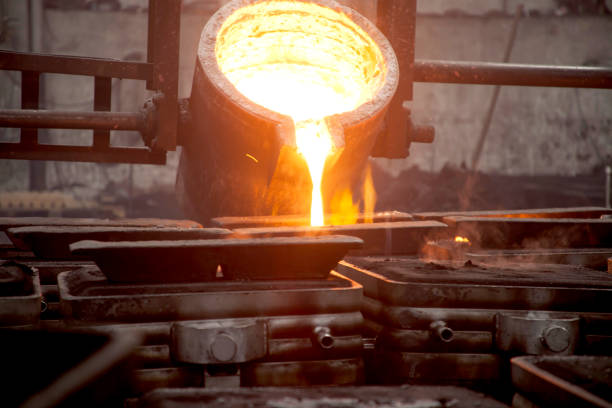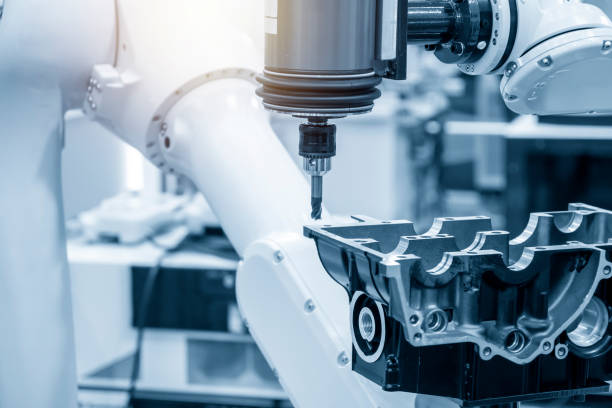Aluminum is one of the most used metal alloys around the world, as its flexibility allows for a wide range of applications. In this scenario, it is not difficult to imagine that different processes have been used for centuries so that the material is used in the best way. Aluminum casting is one of them.

Aluminum smelting is one of the oldest processes used for this metal. Because it is very flexible, casting is considered simple, and its melting point is low, occurring around 660ºC.
Foundry is one of the most important steps within the industry and has played an active part in advancing society. In addition, data shows the growth of the foundry industry in recent years, showing the market’s interest in the process.
Speaking of aluminum itself, casting can be done in different ways. Continue reading the article to find out what they are.
Aluminum casting shapes
Among the most common ways of melting aluminum, it is possible to mention three main ones. Check out a little about each one of them.
Aluminum casting in sand and steel mold
Here, the aluminum flows to fill by gravity with the help of the sprue (or mass-batch). The main advantages of this casting are its low initial cost, high range of possible geometries for copying, and also medium repeatability.
As disadvantages, we can mention the possibility of porosity and flaws such as cold welds and peeling. In addition, filling failure can sometimes happen.
The casting of aluminum in metal matrix
In the metal matrix process, the metal is injected with great pressure in order to fill the mold in its entirety and thus reproduce with precision and richness of detail. For this reason, this is a casting process widely used in the automotive sector, especially in parts that have significant details and require a high-precision copy.

The main advantages of metal die casting are the excellent finish, precision of details, and surface quality, in addition to being very useful for large volumes of parts. The disadvantages are related to the high initial cost and the need to produce a steel matrix for injection.
Pressure die-casting aluminum
In pressure casting, aluminum is gravitationally poured into a mold located in a press. After pouring, pressure is injected into the aluminum while it is still liquid. The pressure difference between the center of the block and its surface causes gaseous porosities to go to the surface, forced out. This leaves the material almost free of all porosity, in addition to offering homogeneity.
As advantages, pressure casting offers the possibility of applying a series of metallic alloys, variation of geometries, and also a low initial cost since it is not necessary to have dies or molds. However, its disadvantages are the lack of repeatability and even the lack of homogeneity in large blocks.
Important information about aluminum casting
The forms mentioned above use the flow of aluminum as part of the foundry, whether with greater or lesser application. Therefore, it is important that the metal has a good flow, something that happens more easily when it has silicon in its composition. Because of this, it is quite common for aluminum alloys with a higher amount of silicon to be used more in foundry.
Given the differences in forms, it is important to understand which one is most suitable for the demand that the industry wants to meet. For small quantity, large size, and intricate castings, aluminum sand casting, and steel mold is ideal. For a large volume of parts, pressure casting is the most indicated.
WHAT ARE THE TYPES OF ALUMINUM CASTING?
There are three main types of aluminum casting: the first is sand and steel casting, the second is in a metallic matrix, and the third is under pressure. Below we present more detailed content of each type. Follow!
Aluminum casting in sand and steel mold
It is a process in which the aluminum is drained by gravity for filling. It starts with a mass batch or injection channel, and its main advantage is that the initial costs are considered low. Furthermore, the repeatability is rated average, and there is still a range of possible geometries that can be replicated.

On the other hand, the disadvantages relate to porosities that may arise in the process and other types of failures, such as cold welds, holes, drains, etc. When the casting is deficient, the act of filling itself can also be compromised.
The casting of aluminum in metal matrix
The aluminum is injected so that the filling takes place in the entire area of the mold, a job done with great pressure to guarantee the best result. In this way, it is possible to reproduce much more specific details, especially if we compare it with the first type of aluminum casting mentioned in the previous paragraph.
It’s a common process in the automotive industry, particularly for creating parts with critical detail and thin walls that require perfect copying and exact dimensions.
The main advantage of the method is the above-average surface quality. Nor can we forget the differentiated finish and the millimeter precision in the details. There is almost no porosity, and the repeatability is high. On the other hand, it has a high initial cost due to the need for a steel mold for injection. There are still usage restrictions on other injection alloys.
Pressure die-casting aluminum
In this last type of aluminum foundry, the metal alloy is poured by gravity and directly into a mold with a press. Next, pressure is injected between 6 and 8 bars, still in liquid aluminum. It is precisely the difference in pressure between the surface of the block and its center, in addition to the contact with the atmosphere, that “sends” all air residues and gaseous porosities to the surface of the blocks, thus guaranteeing a homogeneous and almost free material any porosity.
About the advantages, the main one is that it is possible to apply different types of metallic alloys. There is also a wide range of geometries that can be copied at low cost. This happens because the method eliminates the use of expensive molds or dies. As a disadvantage, we can point out the low repeatability and, possibly, the lack of homogeneity in large blocks since their solidification is precocious.
Find aluminum alloys for casting.
Castingod works with commitment and high quality to offer metallic alloys to customers all over the world!
With a wide portfolio of aluminum alloys for foundries, Castingod is an ally for your industry’s processes, ensuring efficiency and the good productivity you need in your daily tasks.
You don’t have to choose between fair price, high quality, and reliability. At Castingod, you have all three!
Get to know all the alloys for aluminum casting, among other information, by contacting us!








